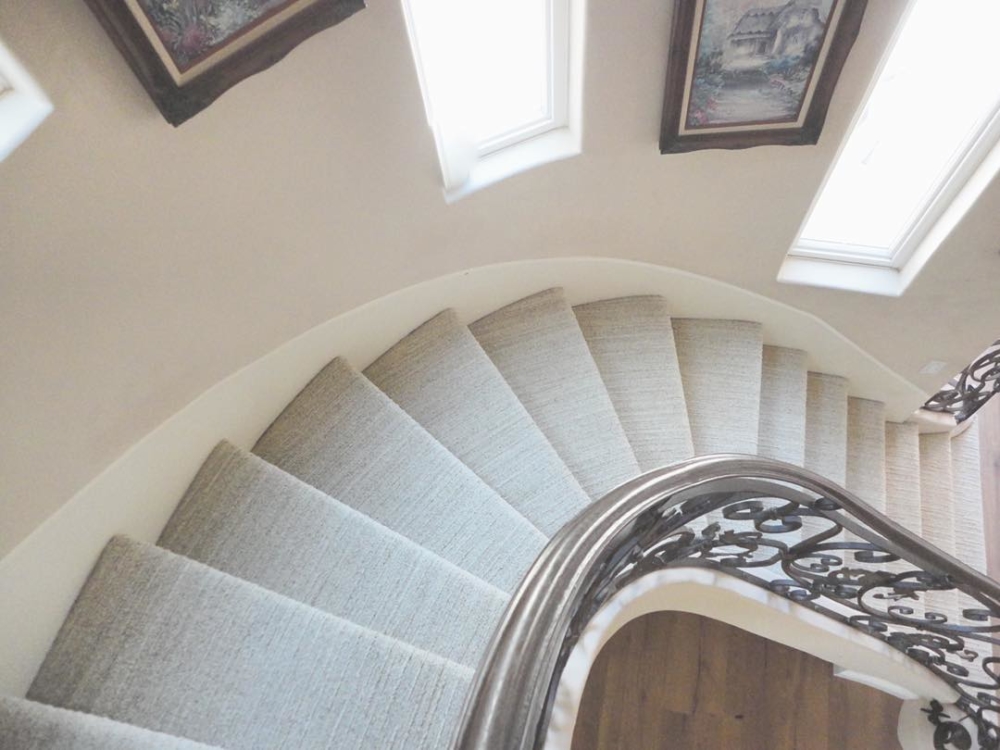Carpets protect stairs from wear and tear and can help to prevent slips and falls. People, pets and dragging heavy items can take their toll on stairs and their coverings. Because of their heavy traffic and frequent use, it’s important to find carpet for steps that can handle the abuse that comes with day to day use.
Pairing the carpeting with a good quality, hard-wearing under pad will protect the stairs and make a softer landing for feet. If price is a concern, invest in a premium quality underlay and a slightly lesser quality carpet as the underlay will help to prolong the life of the carpet.
Wool is naturally fire retardant, has an inherent insulation factor and is stain resistant, requiring less care and maintenance than even synthetic materials. Wool carpeting is commonly used in high-traffic commercial spaces, such as hotels and conference centers, for these reasons.
Alternative sustainable, environmentally conscious choices include sisal, seagrass, coir and jute, though jute is less hard-wearing than the others and is not a wise choice for stairs.
Synthetic materials cost less than carpets with natural fibers. Nylon is a popular choice for carpets because of its strength, durability and resistance to stain. Polyester isn’t as durable but it’s moth resistant, stain resistant and non-allergenic. Another synthetic, polypropylene, is a common choice for basements or outdoor areas because of its resistance to moisture but it’s quite durable as well.
Blended fibers, often 80 percent wool to 20 percent synthetic fiber, combines the resilience and warmth of wool with the hard-wearing, more investment-friendly properties of synthetics, making them an optimal choice for stairs.
Stair Carpet Pile Selection
A low, dense pile carpet is the most forgiving on stairs, hiding footprints and vacuum marks and not flattening underfoot. Berber, woven and loop-pile carpets all contain looped fibers. Good quality carpets that use heavier yarns and fibers and have a tight weave can better withstand tears and pulls. However, if you have pets with claws, especially those that like to scratch at surfaces, a better option is a twist pile, which will not snag or fray like a loop.
Best Colors for Stair Carpets
Even durable, stain-resistant carpets and runners can show dirt and wear and tear over time. Light colors are most prone to showing stains, while very dark tones will show dust and fluff; mid-tones are the most forgiving.
Solid colors are an option, but adding a stripe or design adds interest, injects some life and color, and also helps disguise long-term use. Consider the shape of the stairway when selecting the pattern as some will be difficult to match as the stairs rise and turn. For more complicated layouts, consider a weave that incorporates many colors, as do many Berbers.
